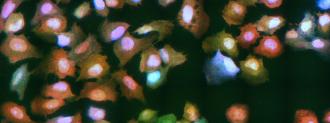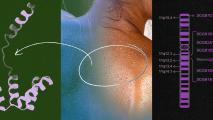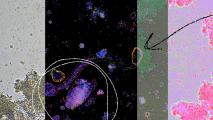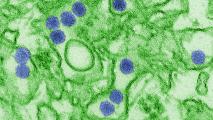A granular understanding of how a virus infects a cell is — as you might imagine — crucial to understanding these invisible apex predators.
And while we definitely know some things about how viruses infect and replicate, we’ve only got a piecemeal understanding of the process, like Polaroids tacked to a cork board or dancers in a strobe light.
A new technique called virus infection real-time imaging (VIRIM) now allows researchers to watch the invasion and replication as it unfolds, showing what the virus is doing, where — and how potentially to stop it.
“This new method enables us to address many important questions about viruses”, study author Sanne Boersma said in a press release.
Glow and Tell
VIRIM was developed on an RNA virus by researchers at Hubrecht Institute and Utrecht University in the Netherlands.
“RNA viruses are among the most prevalent pathogens and are a major burden on society,” the authors wrote in their paper, published in Cell.
Notable RNA viruses include the COVID-19 coronavirus, ebolavirus, measles virus, rabies virus, and rhinovirus (another common-cold cause).
Despite being studied regularly — I mean, look at that list! — our understanding of what they do in the first hours after infection is sketchy, the authors note. We simply didn’t have assays sensitive enough to see it.
VIRIM is meant to be that sensitive assay. The technique uses a Tanenbaum technology called SunTag to, ahem, shed some light on how viruses infect cells.
When it makes contact with the virus’s RNA, SunTag sticks the viral proteins with a bright fluorescent marker. Like a marine biologist tracking a great white, researchers can then follow those tags into and around the cell under a microscope, highlighting “when, where and how quickly a virus produces its proteins and replicates in its host cell.”
The image is striking: the glowing pinpricks of viral proteins multiplying in the poison-green cells call to mind night vision footage of tracer rounds lighting up the sky in the first Gulf War.
Factories and Achilles
Viruses propagate by turning cells into virus factories. Once they slip in, they attempt to commandeer the cell’s organelles and functions to crank out more copies of themselves.
The cells aren’t helpless. They fight back with their own internal immune systems and release “help me!” distress signals, like cytokines, to try to rally the external immune system to their defense.
Using VIRIM, the researchers identified a pivotal moment in that fight. When their SunTagged virus was introduced into cells, the virus — as you’d expect — didn’t win every time.
“These host cells were infected by a virus, but the virus failed to replicate,” Boersma said.
This piqued their interest. The researchers bolstered the cell’s internal immune systems, which then rebuffed the virus, killing it before its first replication.
That first step may be when the virus is most vulnerable; halt it there, and the cell stands a decent shot of winning. Fail, and it could be overrun and converted into an enemy base.
“Understanding viral replication and -spreading can help us determine the Achilles’ heel of a virus,” Boersma said.
“This knowledge can contribute to the development of treatments, for example a treatment that intervenes during a vulnerable moment in the virus’ life. That allows us to create more efficient therapies and hopefully mitigate the impact of viruses on society.”
Using VIRIM, the researchers hope we may be able to pinpoint when any number of viruses are susceptible to having their replication stopped — including SARS-CoV-2.






